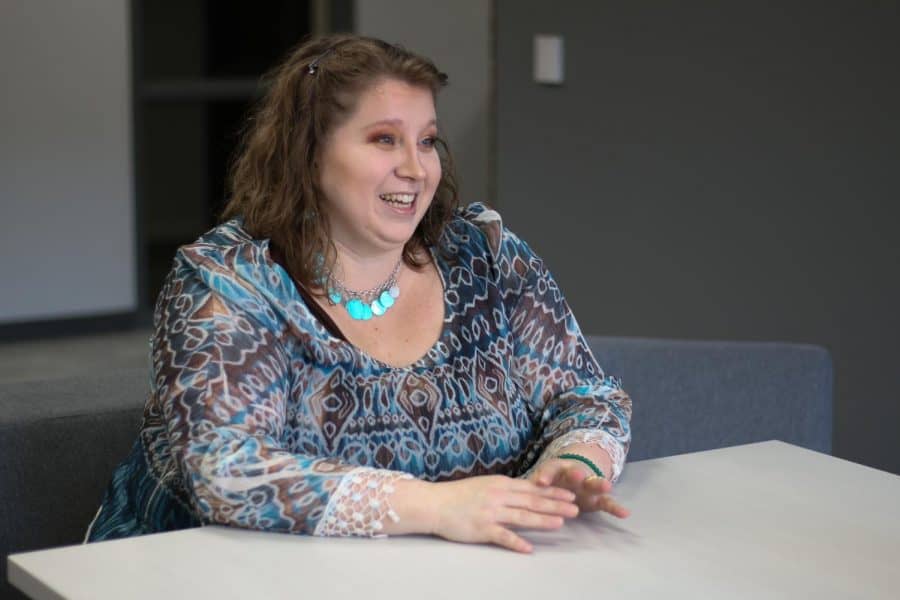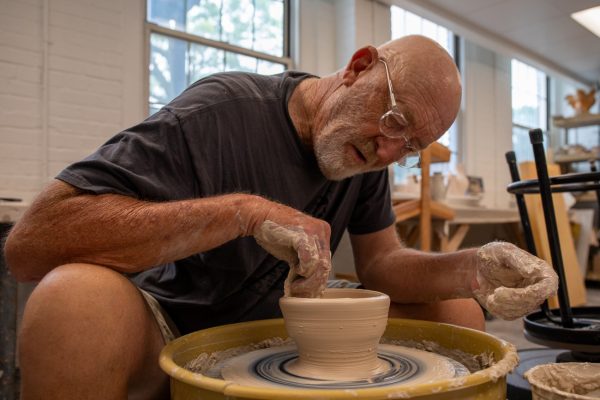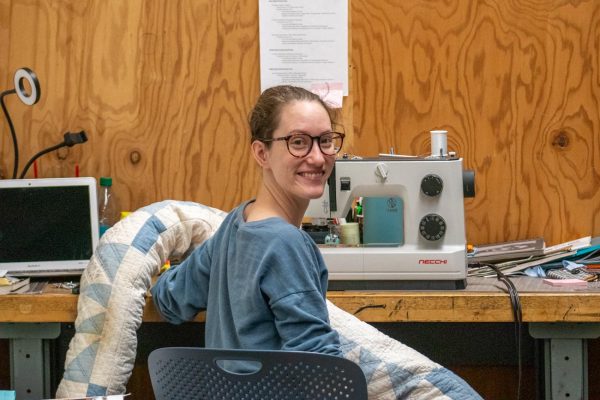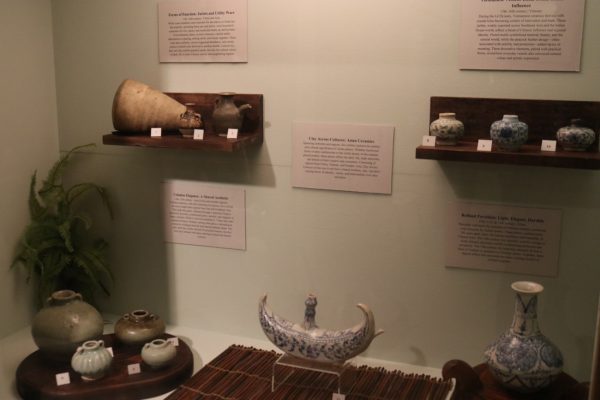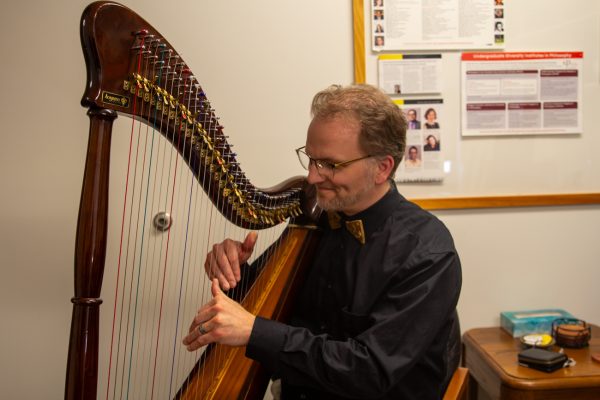Grad student’s in utero invention could make childbirth safer
Tammy Dorsey, mother of five and graduate student in the Innovation and Design master’s program at WSU discusses her biomedical engineering senior project. The project would help OB/GYN’s monitor fetal oxygen levels of the Fetus during childbirth. This project has exanded into her master’s program. Feb. 3, 2019
Wichita State graduate student Tammy Dorsey wants to make childbirth safer. As a mother of five, Dorsey recognizes first-hand how important it is to have accurate information during childbirth.
“My middle child was born blue,” Dorsey said. “He had a normal heart rate all through delivery, and that never sat well with me. They didn’t know he was in distress.
“Fastforwarding through my educational career, I had to get to a point where I could actually do something about it.”
As part of her biomedical engineering senior design project at WSU, Tammy Dorsey invented a non-invasive in utero tool that reads the oxygen levels of unborn babies and alerts doctors and nurses when their oxygen level is too low.
It was the loss of her brother that first pointed Dorsey in the direction of biomedical engineering, she said.
“I started off being super excited about prosthetics,” Dorsey said. “I lost my brother in Iraq and wanted to give back to them by helping with prosthetics for the guys that do come home, and so that led me to the biomedical engineering program.
“For my senior design project, I stumbled into something that I’m very passionate about, which is the prenatal care industry and the shape that it’s in, which is absolutely unsettling. I decided that that’s what I needed to focus on.”
Dorsey is now in the process of testing her device, which reads fetal oxygen levels by measuring a baby’s pH. This tool gives attending doctors the data necessary to accurately detect fetal distress.
For her senior design project, Dorsey and her team followed doctors around and interviewed them to see where they had unmet needs.
“I really focused on OBs (obstetricians),” Dorsey said. “Being a mom, being there myself, understanding that the U.S. is the costliest, most dangerous place in the developed world to give birth, I was like, ‘No. We’ve got to do better.’”
Doctors told Dorsey they needed a way to know when a baby in distress due to a lack of oxygen. Dorsey said there’s been very little innovation in the prenatal field in the last 20 years.
“They have no clue when a baby’s in trouble,” Dorsey said. “They’re using external monitors and making educated guesses on interpretations of this data.”
Dorsey said standard monitors weren’t designed specifically to measure fetal oxygen levels, so there’s a large margin of error. In an effort to bridge that gap, Dorsey developed a non-invasive way to give obstetricians the data they needed in real time.
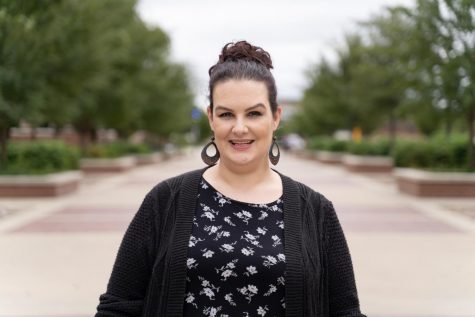
Audrey Korte was a reporter and the opinion editor for The Sunflower. She hosted The Sunflower News Podcast.

Eduardo Castillo was a former multimedia editor for The Sunflower. Castillo majored in communications.



